How to control personnel contamination in cleanrooms
Cleanrooms play a vital role in the production process of pharmaceutical factories, and their cleaning effects directly affect the safety and quality of pharmaceuticals. Therefore, pollution control in clean rooms must receive attention and attention. In order to maintain the stability and safety of the clean room environment, the pollution sources that generate particulates must be controlled to the greatest extent possible. People are the largest source of pollution in clean rooms. Personnel hygiene, behavioral habits and personnel training will all affect the environmental quality of the clean room. This article will explain how to control personnel pollution in clean rooms from three aspects: personnel hygiene, behavioral habits and personnel training.

1.Hygiene and health
Personnel Health
Personnel entering the clean room should first be in good physical condition. Persons suffering from colds, infectious diseases and other diseases are not allowed to enter the clean area.
For newly hired employees, a comprehensive health examination should be conducted on the new employees, and personal health files should be established to facilitate inspection, understanding, and tracking of personal health status.
Personnel entering clean areas should practice good personal hygiene. Keeping the surface of the body clean and odor-free is a must. Personnel entering the clean area must develop good hygiene habits, bathe frequently, get haircuts frequently, change clothes frequently, wash hands frequently, cut nails frequently, and keep clean and tidy. Enterprises should formulate scientific personnel hygiene procedures and conduct regular hygiene training for employees to cultivate their awareness and initiative in complying with hygiene procedures.
Control of dressing requirements
In order to ensure the cleanliness and safety of clean areas, personnel must strictly follow the corresponding dressing procedures and precautions when entering clean areas at all levels. Chapter 7 “Personnel” 7.13 of Appendix 1 of the “EU GMP Guidelines” clarifies the changing requirements for each cleanliness level.
Grade B (including access / interventions into grade A): appropriate garments that are dedicated for use under a sterilised suit should be worn before gowning (see paragraph 7.14). Appropriately sterilised, non-powdered, rubber or plastic gloves should be worn while donning the sterilised garments. Sterile headgear should enclose all hair (including facial hair) and where separate from the rest of the gown, it should be tucked into the neck of the sterile suit. A sterile facemask and sterile eye coverings (e.g. goggles) should be worn to cover and enclose all facial skin and prevent the shedding of droplets and particles. Appropriate sterilised footwear (e.g. over-boots) should be worn. Trouser legs should be tucked inside the footwear. Garment sleeves should be tucked into a second pair of sterile gloves worn over the pair worn while donning the gown. The protective clothing shouldminimize shedding of fibres or particles and retain particles shed by the body. The particle shedding and the particle retention efficiencies of the garments should be assessed during the garment qualification. Garments should be packed and folded in such a way as to allow operators to don the gown without contacting the outer surface of the garment and to prevent the garment from touching the floor.
(The Rules Governing Medicinal Products in the European Union
Volume 4 EU Guidelines for Good Manufacturing Practice for Medicinal Products for Human and Veterinary Use,Brussels,22.8.2022 C(2022) 5938 final,7.13,Annex 1
Manfacture of Sterile Medicinal Products Personnel)
Grade C: Hair, beards and moustaches should be covered. A single or two-piece trouser suit gathered at the wrists and with high neck and appropriately disinfected shoes or overshoes should be worn. They should minimize the shedding of fibres and particles.
(The Rules Governing Medicinal Products in the European Union
Volume 4 EU Guidelines for Good Manufacturing Practice for Medicinal Products for Human and Veterinary Use,Brussels,22.8.2022 C(2022) 5938 final,7.13,Annex 1
Manfacture of Sterile Medicinal Products Personnel)
Grade D: Hair, beards and moustaches should be covered. A general protective suit and appropriately disinfected shoes or overshoes should be worn. Appropriate measures should be taken to avoid any ingress of contaminants from outside the clean area.
(The Rules Governing Medicinal Products in the European Union
Volume 4 EU Guidelines for Good Manufacturing Practice for Medicinal Products for Human and Veterinary Use,Brussels,22.8.2022 C(2022) 5938 final,7.13,Annex 1
Manfacture of Sterile Medicinal Products Personnel)
Additional gowning including gloves and facemask may be required in grade C and D areas when performing activities considered to be a contamination risk as defined by the CCS.
(The Rules Governing Medicinal Products in the European Union
Volume 4 EU Guidelines for Good Manufacturing Practice for Medicinal Products for Human and Veterinary Use,Brussels,22.8.2022 C(2022) 5938 final,7.13,Annex 1
Manfacture of Sterile Medicinal Products Personnel)
Gaible has been focusing on the field of clean protection for sixteen years, mainly producing and operating protective wear equipment for clean areas. The product range is rich, including one-piece suit series, separate suit series, underwear series, and peripheral accessories such as rubber gloves, goggles, high-top shoes, hats, masks, etc. are provided. Gaible can configure corresponding clean clothing solutions for different ABCD-level clean areas, and provide dressing guidance and dressing guidance video teaching materials.
2.Behavioral habits
The source of dust in clean rooms mainly comes from dust generated by workers. In a clean production environment, the amount of dust generated by workers is related to the material, type, and form of the clean clothes they wear, as well as the activities and range of movements of workers in the clean room and other factors.
Table 1 Amount of dust generated by workers during different actions
| movement | Particle(≥0.3μ)m/pc•min | Action speed | Particle(≥0.3μm)/pc•min |
| Stand or sit | 100 000 | 0.9m/s walking | 5 000 000 |
| Movement of hand, forearm, head, neck | 500 000 | 1.5m/s walking | 7 500 000 |
| Movement of arms, upper body, head, neck | 1000 000 | 2.2m/s walking | 10 000 000 |
| Stand up or sit down | 2 500 000 |
Note: The tester wears ordinary clean clothes and performs various standard actions in a clean production environment.
As can be seen from Table 1, when wearing the same clean clothes, the greater the range of movement, the faster the walking speed, and the higher the amount of dust generated.
Table 2 The amount of dust emitted by the human body under different clothing and different movements
| move
Clothes Particle |
Particle(≧0.5μm)/pc.(min.person) | ||
| Frock | Two-piece suit | Coverall | |
| Stand still | 339×103 | 113×103 | 5.6×103 |
| Sit still | 302×103 | 112×103 | 7.45×103 |
| Wrist move up and down | 2980×103 | 300×103 | 18.7×103 |
| Upper body forward bend | 2240×103 | 540×103 | 24.2×103 |
| Wrist free move | 2240×103 | 289×103 | 20.5×103 |
| Take off cap | 1310×103 | — | — |
| Head move up and down | 631×103 | 151×103 | 11.2×103 |
| Upper body twist | 850×103 | 267×103 | 14.9×103 |
| Stoop | 3120×103 | 605×103 | 37.3×103 |
| March | 2300×103 | 860×103 | 44.8×103 |
| Walk | 2920×10³ | 1010×10³ | 56×10³ |
It can be seen from Table 2 that under the same action conditions, the amount of dust produced by the human body of workers wearing split clean clothes is 1/5 to 1/3 of the amount of dust produced by workers wearing work clothes or coats, while the amount of dust produced by the one-piece clean clothes is The amount of dust produced is less. It can be seen that it is very important to choose clean work clothes of appropriate material and form.
Table 3 Rate of increase in pollution level when workers are active
| Movement | Pollution level/
Increased ratio |
Movement | Pollution level/
Increased ratio |
| 4 or 5 people gather in
one place |
1.5~3 times | Wear shoe covers
on the floor |
1.50~3.0 times |
| walk | 1.2~2 times | Take the handkerchief
from pocket |
3.0~10 times |
| Sit still | 1~1.2 times | General breathing
condition |
none |
| Reach into lamiar flow
clean bench |
1.01 times | Breath within 20 minutes
after smoking |
2~5 times |
| When the laminar flow
bench does not work |
none | sneeze | 5~20 times |
| Use a brush to clean
synthetic clothes |
1.5~3.0 times | Wipe face and hands | 1~2 times |
| Take off shoe covers and step on the floor | 1.0~5.0 times |
It can be seen from Table 3 that the activities of staff in a clean environment will significantly increase the pollution level of the clean environment. To sum up, different movements and movement ranges will affect the amount of dust generated by people, so we should pay attention to posture and movement. The correct code of conduct is as follows:
Do not lean on any surface; Do not squeeze the overalls; Do not lean materials against people; Keep your body away from the product; Stand upright to minimize disruption of airflow; Keep arms at waistline or above;
Any operation should be done as gently and as slowly as possible to avoid disturbing the airflow; Avoid strenuous physical activities, and do not move or turn around quickly; Open and close slowly, do not open or close; Do not let anything pass over the product and do not operate on the product; Use the back of your fingers for touch screen operations or key operations; People should not come into contact with each other and keep a distance;
Avoid unnecessary movements and try not to do squats; When not involved in process operations, remain standing or seated; Do not touch, scratch the skin, or rub the nose. If this happens, you should go back to the locker room to change new gloves and masks; Do not touch the floor. If something falls, it can be removed at the end of the day if it does not create a risk;
Try not to talk, you really need to exit the key area before talking; Don’t shout unless you really need to; Do not communicate through openings, entrances, or airlocks; Keep away from the product when sneezing and replace the mask afterwards; Do not touch the mask with your hands, and do not take off the mask to talk in the sterile area;
- Personnel training
In clean rooms, people are an important source of particulate pollutants. For staff entering the clean room, they should undergo corresponding training and assessment. Only those who pass the assessment can enter the clean room. 1.EU GMP regulatory requirements EU GMP Appendix 1 Chapter 7 requirements:
The manufacturer should ensure that there are sufficient appropriate personnel, suitably qualified, trained and experienced in the manufacture and testing of sterile products, and any of the specific manufacturing technologies used in the site’s manufacturing operations, to ensure compliance with GMP applicable to the manufacture and handling of sterile products.
(The Rules Governing Medicinal Products in the European Union
Volume 4 EU Guidelines for Good Manufacturing Practice for Medicinal Products for Human and Veterinary Use,Brussels,22.8.2022 C(2022) 5938 final,7.1,Annex 1
Manfacture of Sterile Medicinal Products Personnel)
All personnel including those performing cleaning, maintenance, monitoring and those that access cleanrooms should receive regular training, gowning qualification and assessment in disciplines relevant to the correct manufacture of sterile products.
Training contents for sterile operators.
(The Rules Governing Medicinal Products in the European Union
Volume 4 EU Guidelines for Good Manufacturing Practice for Medicinal Products for Human and Veterinary Use,Brussels,22.8.2022 C(2022) 5938 final,7.3,Annex 1
Manfacture of Sterile Medicinal Products Personnel)
Traing content:
(1) Good Manufacturing Practice (GMP)
(2) Aseptic operating techniques
(3) Clean room code of conduct
(4) Basic knowledge of microbiology
(5) Basic knowledge of hygiene (concepts of cleaning, disinfection and sterilization, etc.)
(6) Dressing procedures, including all details of the dressing procedures
(7) Contact sampling method
(8) Pollution control
(9) The harm of drugs contaminated by microorganisms to patient safety
(10) Key process characteristics
(11) The meaning of alert limit and action limit
Evaluation standards for personnel training
(1)The personnel accessing grade A and B areas should be trained for aseptic gowning and aseptic behaviours.
Compliance with aseptic gowning procedures should be confirmed by assessment and periodic reassessment at least annually, and should involve both visual and microbial assessment (using monitoring locations such as gloved fingers, forearms, chest and hood (facemask / forehead).
(The Rules Governing Medicinal Products in the European Union
Volume 4 EU Guidelines for Good Manufacturing Practice for Medicinal Products for Human and Veterinary Use,Brussels,22.8.2022 C(2022) 5938 final,7.4,Annex 1
Manfacture of Sterile Medicinal Products Personnel)
(2)The unsupervised access to the grade A and grade B areas where aseptic operations are or will be conducted should be restricted to appropriately qualified personnel, who have passed the gowning assessment and have participated in a successful APS.
(The Rules Governing Medicinal Products in the European Union
Volume 4 EU Guidelines for Good Manufacturing Practice for Medicinal Products for Human and Veterinary Use,Brussels,22.8.2022 C(2022) 5938 final,7.4,Annex 1
Manfacture of Sterile Medicinal Products Personnel)
(3)Unqualified personnel should not enter grade B cleanrooms or grade A in operation. If needed in exceptional cases, manufacturers should establish written procedures outlining the process by which unqualified personnel are brought into the grade B and A areas. An authorized person from the manufacturer should supervise the unqualified personnel during their activities and should assess the impact of these activities on the cleanliness of the area. Access by these persons should be assessed and recorded in accordance with the PQS.
(The Rules Governing Medicinal Products in the European Union
Volume 4 EU Guidelines for Good Manufacturing Practice for Medicinal Products for Human and Veterinary Use,Brussels,22.8.2022 C(2022) 5938 final,7.5,Annex 1
Manfacture of Sterile Medicinal Products Personnel)
(4)There should be systems in place for the disqualification of personnel from working in or given unsupervised entry into cleanrooms that is based on aspects including ongoing assessment and/or identification of an adverse trend from the personnel monitoring programme and/or after being implicated in a failed APS. Once disqualified, retraining and requalification should be completed before permitting the operator to have any further involvement in aseptic practices. For operators entering grade B cleanrooms or performing intervention into grade A, this requalification should include consideration of participation in a successful APS.
Volume 4 EU Guidelines for Good Manufacturing Practice for Medicinal Products for Human and Veterinary Use,Brussels,22.8.2022 C(2022) 5938 final,7.6,Annex 1
Manfacture of Sterile Medicinal Products Personnel)
Clean room pollution control is a systematic project that requires the cooperation of multiple links. Clean room staff will be in direct contact with drugs, and they must lead by example and use good hygiene and health habits and behavioral norms to reduce clean room pollution. Clean clothing also plays a vital role in the clean room. How to choose a high-quality clean clothing is a required course for pharmaceutical companies.
Join Our Official YouTube Channel
This article references the Good Manufacturing Practice (GMP) regulations. Specific guidelines and standards mentioned herein are derived from:The Rules Governing Medicinal Products in the European Union Volume 4 EU Guidelines for Good Manufacturing Practice for Medicinal Products for Human and Veterinary Use,Brussels,22.8.2022 C(2022) 5938 final . Website: https://health.ec.europa.eu/index_en
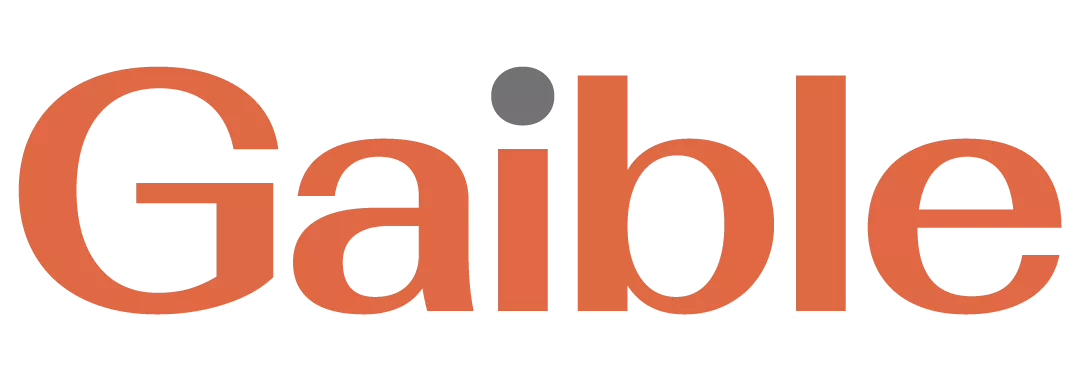

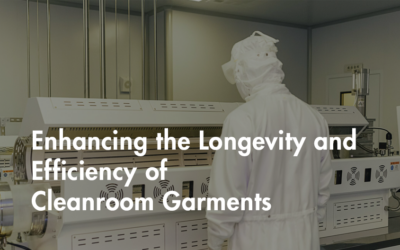
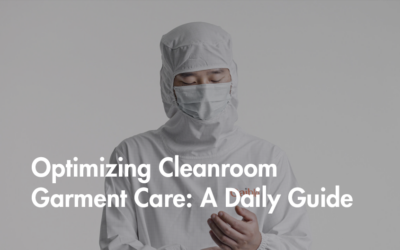
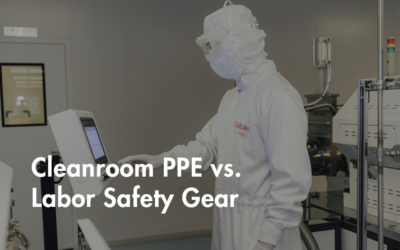
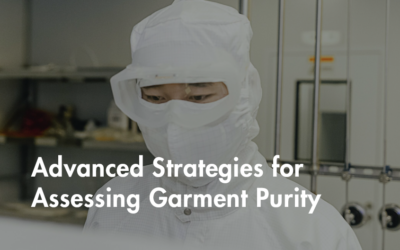
0 Comments